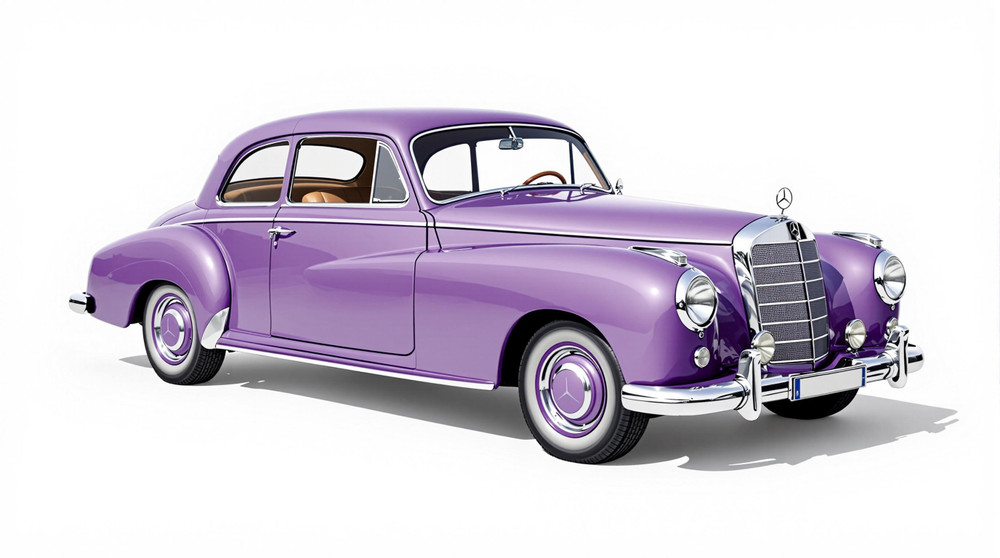Image of 1953 Mercedes-Benz 180, Note: These illustrations use artistic license and may differ from actual historical models.
Performance Metrics
Fundamental Metrics
Emotional Appeal
MMP Rating
| Engine Specifications | |
|---|---|
| Engine: | Inline 4 |
| Displacement: | 1.8L |
| Horsepower: | 52 hp |
| Torque: | Estimated 101 Nm |
| Compression Ratio: | 7.6:1 |
| Ignition System: | Distributor ignition system |
| Cooling System: | Liquid cooled |
| Performance Specifications | |
| 0-60 Time: | Estimated 20 seconds |
| 1/4 Mile Time: | Information not available |
| Top Speed: | 120 km/h |
| Transmission and Drive | |
| Drive Type: | Rear wheel drive |
| Transmission Type: | 4-speed manual |
| Fuel and Efficiency | |
| Fuel System Type: | Carburetor |
| MPG: | Estimated 20-25 MPG |
| Dimensions and Brakes | |
| Brakes: | Drum brakes |
| Wheelbase: | 2,670 mm |
| Weight: | 1,200 kg |
Note: Specifications for classic cars are given to the best of our ability, considering the limited and variant data available.
1953 Mercedes-Benz 180: A Testament to Post-War Ingenuity
The dawn of the 1950s heralded a new era for Mercedes-Benz, marked by the introduction of the 1953 Mercedes-Benz 180. This vehicle, also known as the W120, was a beacon of innovation and a clear indication of the German manufacturer's resilience in the aftermath of World War II. The 180 model was a part of the larger "Ponton" family, which included a range of models that shared similar body styles and mechanical underpinnings. The Mercedes-Benz 180 stood out as a testament to the brand's commitment to luxury and quality during a time when Europe was still recovering from the ravages of war. A unique fact that piques interest is that this model was among the first to feature a unibody design, setting a new standard for vehicle safety and structural integrity.
Design and Innovation
The exterior styling of the 1953 Mercedes-Benz 180 was both elegant and functional, with its rounded edges and prominent chrome grille exuding a sense of class. Its body lines were smooth, reflecting the aerodynamic principles that were becoming more important in automotive design. Inside, occupants were greeted with high-quality materials and an attention to detail that was second to none. The dashboard layout was intuitive, with gauges and controls within easy reach. Notable technological features for its time included independent front suspension and a heating system that was considered advanced for its era. Color options ranged from traditional blacks and greys to more vibrant blues and greens, with black being a popular choice for its timeless appeal. The sedan body style was particularly iconic, offering practicality without compromising on style.
Historical Significance
The 1953 Mercedes-Benz 180's impact on automotive design cannot be overstated. It pioneered passenger safety with its unibody construction, which would later become an industry standard. This innovation not only provided increased rigidity but also improved crash protection for its occupants. The car's design philosophy influenced numerous other vehicles of the era and laid the groundwork for future generations of Mercedes-Benz automobiles.
Performance and Handling
Under the hood, the Mercedes-Benz 180 was powered by a reliable four-cylinder engine that delivered modest performance figures by today's standards but was competitive in its time. While top speed and acceleration figures (such as 0-60 mph times) were not groundbreaking, they provided adequate power for both city driving and highway cruising. Handling characteristics were commendable; the car navigated bumps with composure and maintained stability in windy conditions. Drivers often praised the smooth ride quality and mechanical refinement that came with piloting a Mercedes-Benz.
Ownership Experience
The versatility of the 1953 Mercedes-Benz 180 meant it found use as both an everyday driver and a show car. Its robust engineering contributed to its reputation for reliability, making maintenance straightforward for most owners. Parts were generally accessible, ensuring ease of repair.
Fun Facts
A few interesting tidbits about this classic include its popularity among dignitaries and business elites of the time. While not known for breaking speed records, it set benchmarks in comfort and safety features within its class. Despite some criticisms over its conservative performance figures compared to sports cars of the era, it remained a beloved model for those who valued understated elegance and engineering excellence.
Collector's Information
Today, the 1953 Mercedes-Benz 180 holds a special place in classic car collections worldwide. While production numbers were not as low as some limited-run vehicles, it is estimated that tens of thousands were produced during its lifespan. As with many classics, exact numbers can be elusive due to records lost over time or incomplete archives. In terms of value range, well-maintained examples can fetch anywhere from $20,000 to $50,000 or more depending on their condition, history, and originality. The market has seen appreciation for models like these due to their historical significance and enduring appeal among collectors.
Conclusion
The 1953 Mercedes-Benz 180 is more than just a car; it is a symbol of post-war recovery and technological progress. Its blend of style, safety, and quality has cemented its place in automotive history as an icon of its era. For enthusiasts and collectors alike, owning such a vehicle is not just about possession—it's about preserving a piece of history that continues to inspire admiration and respect.
1953 Mercedes-Benz 180 Catalog of Parts
 1953 Mercedes-Benz 180 Rear Bumper Arm Grommets. 2-1/2" long X 1-3/8" wide-BG 104Rear Bumper Arm Grommets. 2-1/2" long X 1-3/8" wide. Inner slot: 1-11/16" long X 13/16" wide. Pair
1953 Mercedes-Benz 180 Rear Bumper Arm Grommets. 2-1/2" long X 1-3/8" wide-BG 104Rear Bumper Arm Grommets. 2-1/2" long X 1-3/8" wide. Inner slot: 1-11/16" long X 13/16" wide. Pair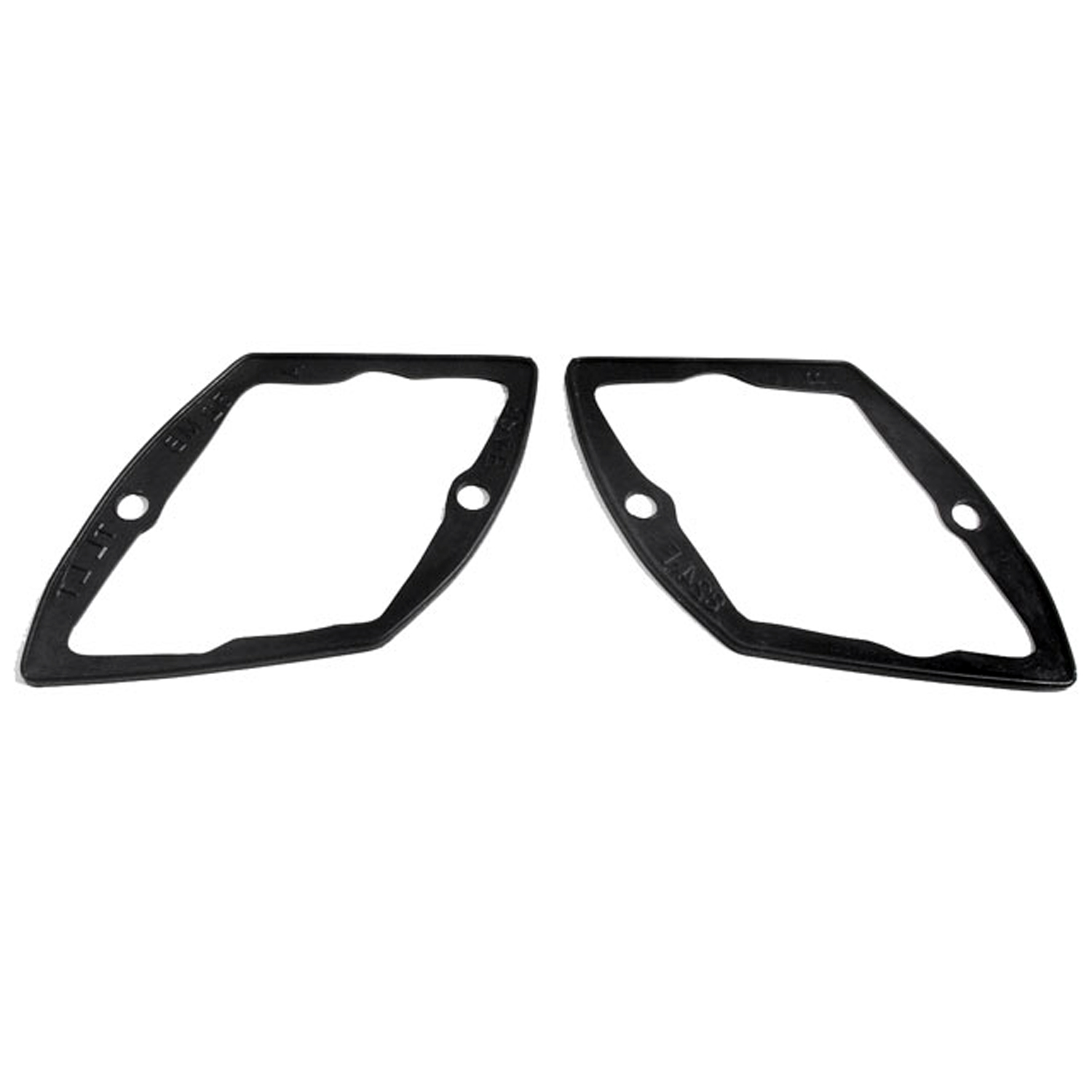 1953 Mercedes-Benz 180 Tail-light Pads. 3-5/8" wide X 3-3/4" long. Pair-MP 824-ETail-light Pads. 3-5/8" wide X 3-3/4" long. Pair
1953 Mercedes-Benz 180 Tail-light Pads. 3-5/8" wide X 3-3/4" long. Pair-MP 824-ETail-light Pads. 3-5/8" wide X 3-3/4" long. Pair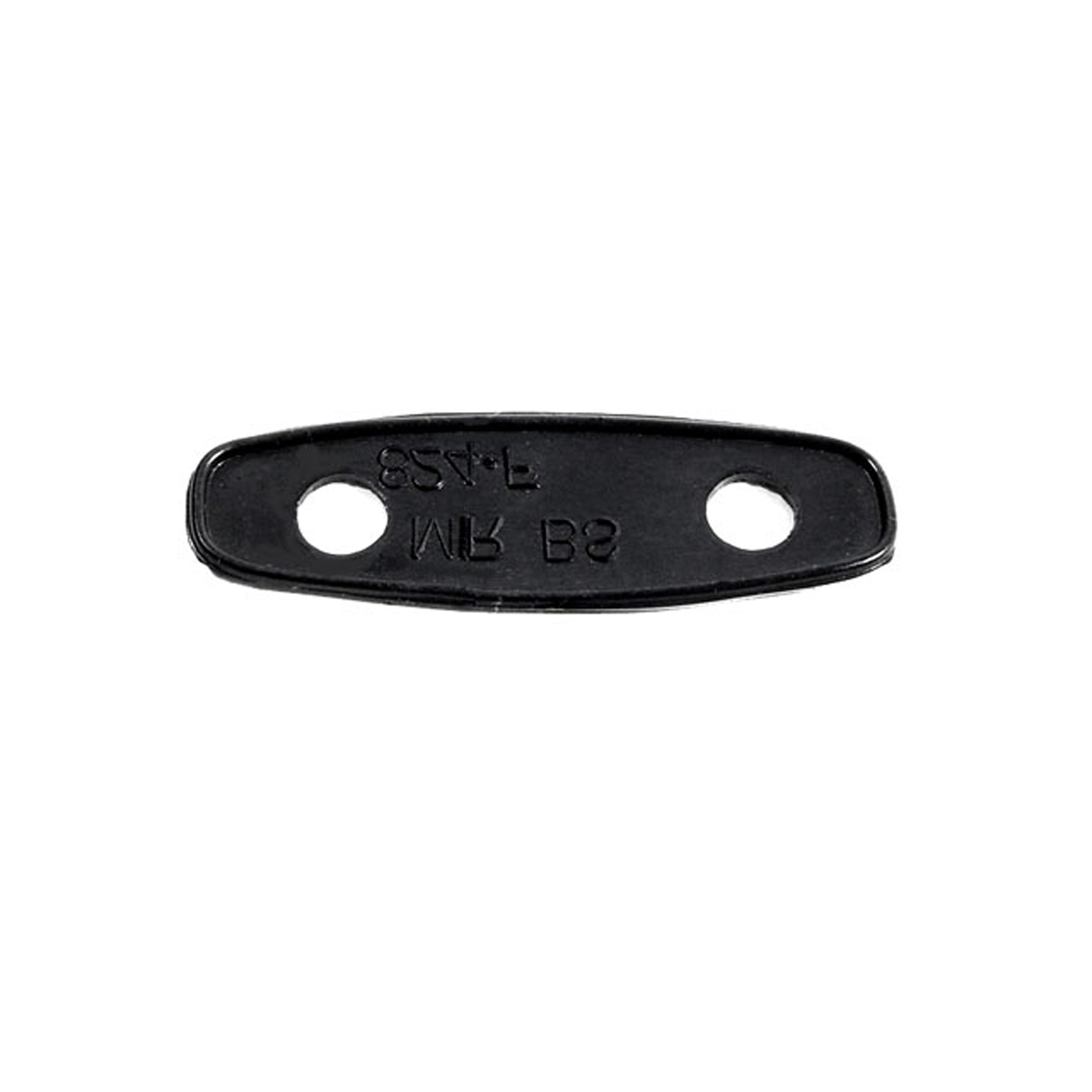 1953 Mercedes-Benz 180 Mirror Base Pad. 1" wide X 3" long. Each-MP 824-FMirror Base Pad. 1" wide X 3" long. Each
1953 Mercedes-Benz 180 Mirror Base Pad. 1" wide X 3" long. Each-MP 824-FMirror Base Pad. 1" wide X 3" long. Each 1953 Mercedes-Benz 180 Clamp Cushion Pad, for Convertible-MP 824-GClamp Cushion Pad, for Convertible. 1-1/4" wide X 2-1/2" long. Each
1953 Mercedes-Benz 180 Clamp Cushion Pad, for Convertible-MP 824-GClamp Cushion Pad, for Convertible. 1-1/4" wide X 2-1/2" long. Each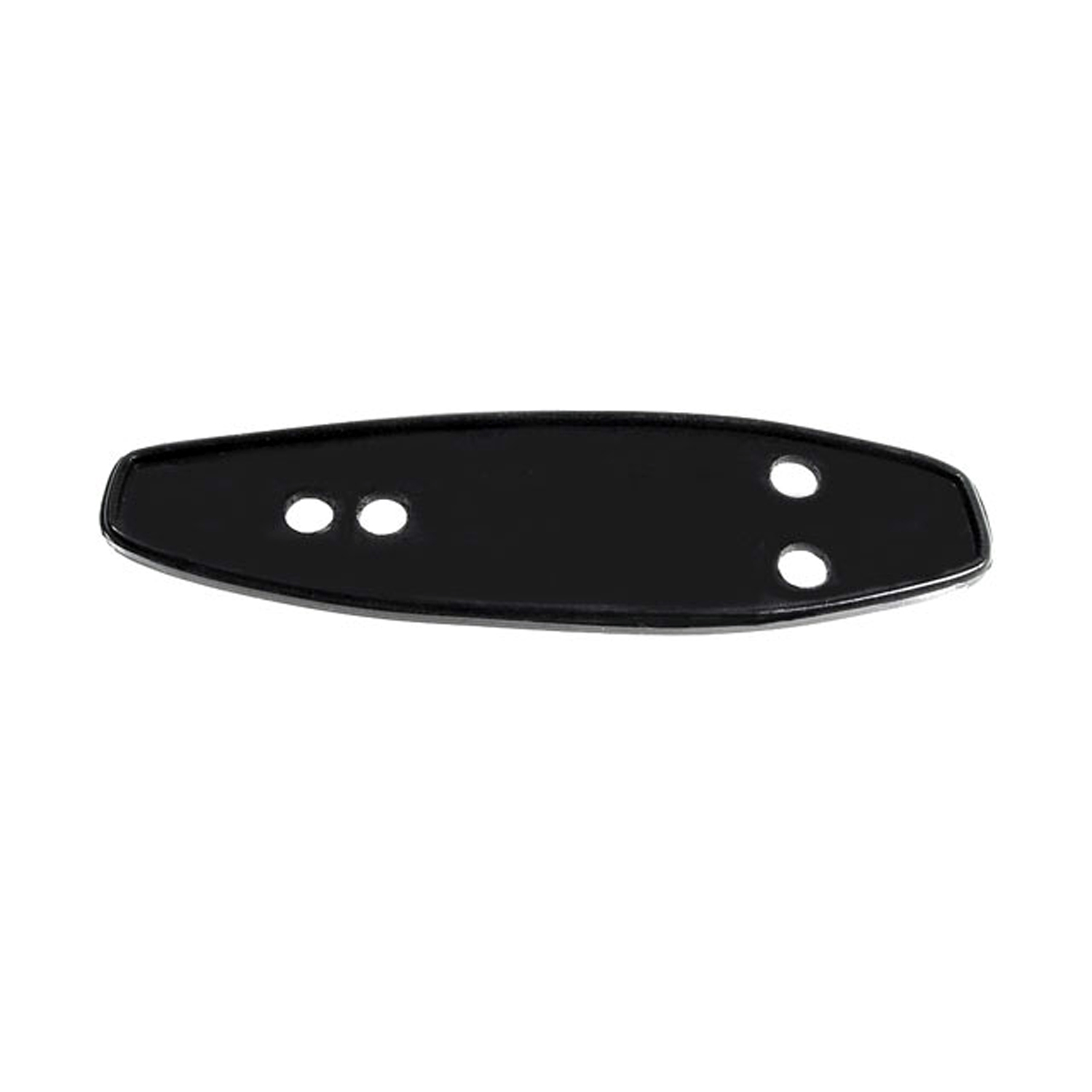 1953 Mercedes-Benz 180 Spare Tire Lock Pad. 2" wide X 6-1/2" long. Each-MP 824-JSpare Tire Lock Pad. 2" wide X 6-1/2" long. Each
1953 Mercedes-Benz 180 Spare Tire Lock Pad. 2" wide X 6-1/2" long. Each-MP 824-JSpare Tire Lock Pad. 2" wide X 6-1/2" long. Each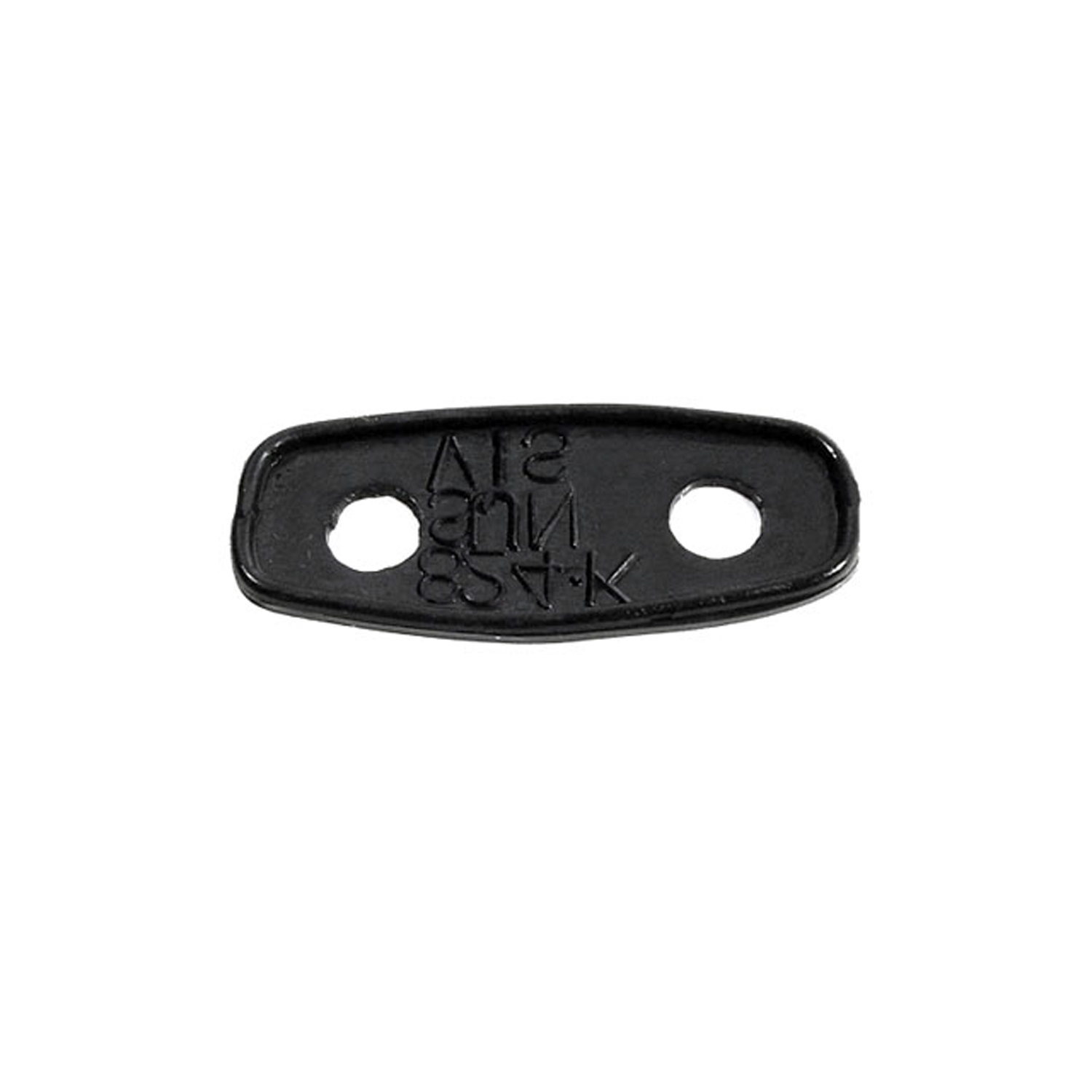 1953 Mercedes-Benz 180 Sun Visor Pad. 7/8" wide X 2" long. Each-MP 824-KSun Visor Pad. 7/8" wide X 2" long. Each
1953 Mercedes-Benz 180 Sun Visor Pad. 7/8" wide X 2" long. Each-MP 824-KSun Visor Pad. 7/8" wide X 2" long. Each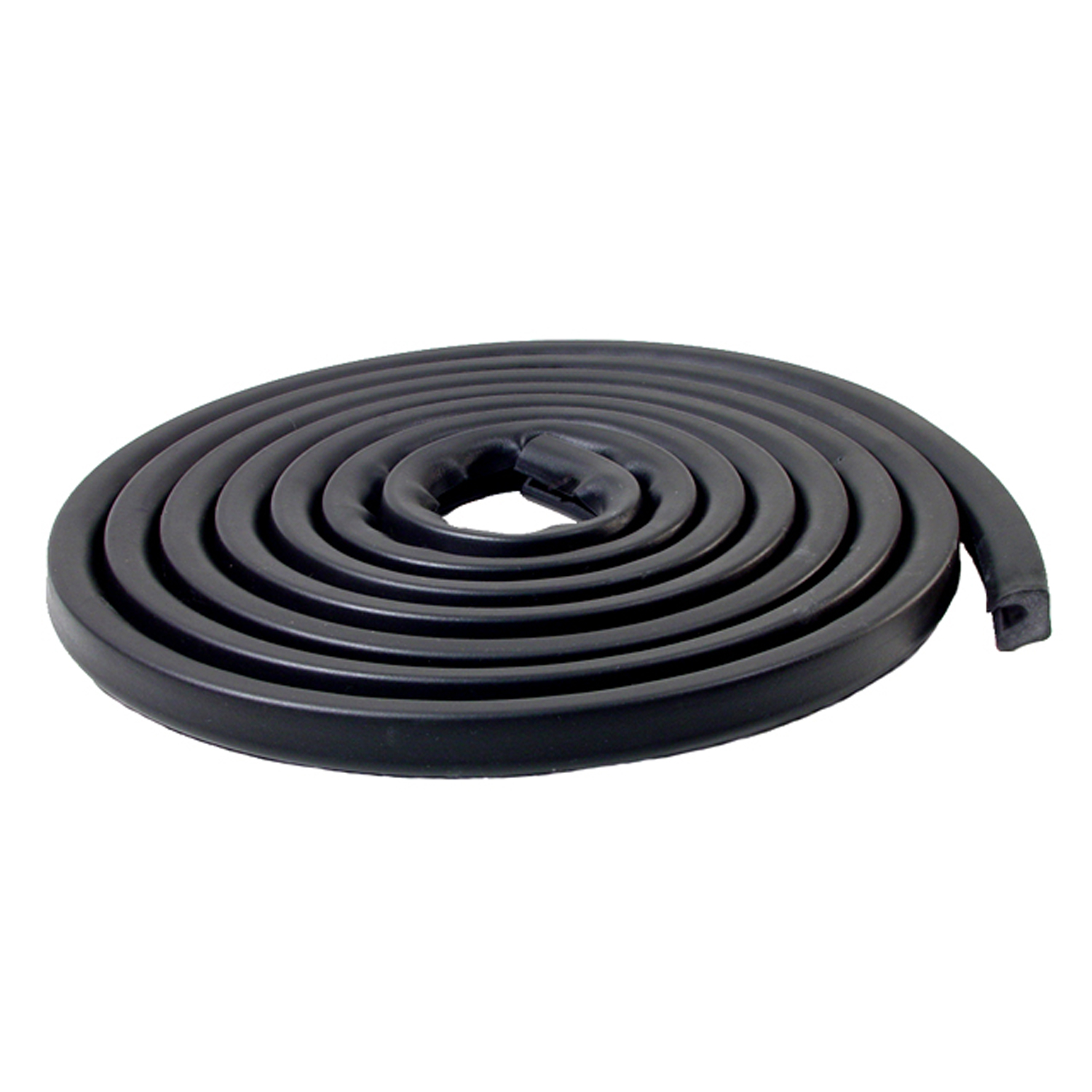 1953 Mercedes-Benz 180 Trunk Seal. Each-TK 63-M/15Trunk Seal. Each
1953 Mercedes-Benz 180 Trunk Seal. Each-TK 63-M/15Trunk Seal. Each 1953 Mercedes-Benz 180 Flexible glass-run channel. Rubber covered and pile lined-WC 12-96Flexible glass-run channel. Rubber covered and pile lined. Unbeaded. 96 in. long. Each. NOTE: $20 special shipping charge applies for domestic orders. Call or email for overseas shipping costs. Part can be sectioned in two or three equal lengths to reduce overseas shipping costs.
1953 Mercedes-Benz 180 Flexible glass-run channel. Rubber covered and pile lined-WC 12-96Flexible glass-run channel. Rubber covered and pile lined. Unbeaded. 96 in. long. Each. NOTE: $20 special shipping charge applies for domestic orders. Call or email for overseas shipping costs. Part can be sectioned in two or three equal lengths to reduce overseas shipping costs.Why Choose Metro?
For over 100 years, Metro Moulded Parts has been the pinnacle of quality in classic car restoration parts. Our commitment to precision and authenticity in every component ensures a perfect fit and an OEM-level appearance.
- Expert Craftsmanship & Quality: Each part is a testament to our dedication to reliability and perfection, crafted from original designs and thoroughly tested.
- Advanced Technology: We use cutting-edge techniques to create flawless, long-lasting parts that surpass others in performance.
- SuperSoft Sponge – The Ultimate Door Seal: Not only are our door seals 30% softer than competitors', but they're also guaranteed to never leak. They effectively reduce wind and road noise, enhancing your classic car's comfort and driving experience.
- Proudly American: Our parts are a product of American craftsmanship, made in the USA with a spirit of excellence and heritage.
- Unrivaled Warranty: We back our products with a 30-year industry-leading warranty, a testament to our confidence in their quality.
Join us in preserving the legacy of classic cars with parts that are crafted for perfection, not just made.

